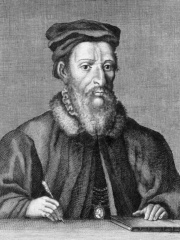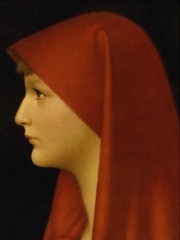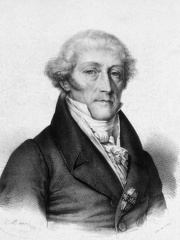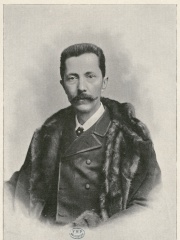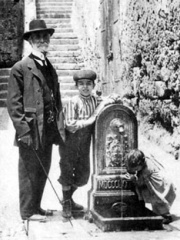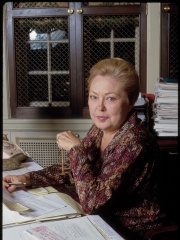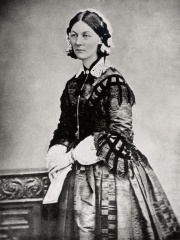
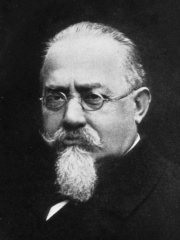
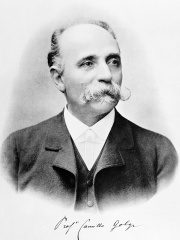
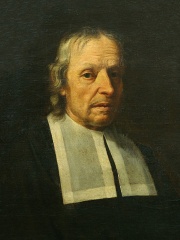
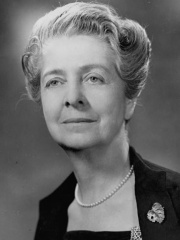
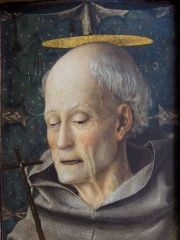
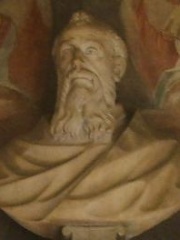
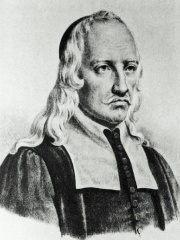
The Most Famous
PHYSICIANS from Italy
This page contains a list of the greatest Italian Physicians. The pantheon dataset contains 502 Physicians, 36 of which were born in Italy. This makes Italy the birth place of the 5th most number of Physicians behind United Kingdom and France.
Top 10
The following people are considered by Pantheon to be the top 10 most legendary Italian Physicians of all time. This list of famous Italian Physicians is sorted by HPI (Historical Popularity Index), a metric that aggregates information on a biography’s online popularity. Visit the rankings page to view the entire list of Italian Physicians.

1. Florence Nightingale (1820 - 1910)
With an HPI of 82.36, Florence Nightingale is the most famous Italian Physician. Her biography has been translated into 108 different languages on wikipedia.
Florence Nightingale (; 12 May 1820 – 13 August 1910) was an English social reformer, statistician and the founder of modern nursing. Nightingale came to prominence while serving as a manager and trainer of nurses during the Crimean War, in which she organised care for wounded soldiers at Constantinople. She significantly reduced death rates by improving hygiene and living standards. Nightingale gave nursing a favourable reputation and became an icon of Victorian culture, especially in the persona of "The Lady with the Lamp" making rounds of wounded soldiers at night.Recent commentators have asserted that Nightingale's Crimean War achievements were exaggerated by the media at the time, but critics agree on the importance of her later work in professionalising nursing roles for women. In 1860, she laid the foundation of professional nursing with the establishment of her nursing school at St Thomas' Hospital in London. It was the first secular nursing school in the world and is now part of King's College London. In recognition of her pioneering work in nursing, the Nightingale Pledge taken by new nurses, and the Florence Nightingale Medal, the highest international distinction a nurse can achieve, were named in her honour, and the annual International Nurses Day is celebrated on her birthday. Her social reforms included improving healthcare for all sections of British society, advocating better hunger relief in India, helping to abolish prostitution laws that were harsh for women, and expanding the acceptable forms of female participation in the workforce. Nightingale was a pioneer in statistics; she represented her analysis in graphical forms to ease drawing conclusions and actionables from data. She is famous for usage of the polar area diagram, also called the Nightingale rose diagram, equivalent to a modern circular histogram. This diagram is still regularly used in data visualisation. Nightingale was a prodigious and versatile writer. In her lifetime, much of her published work was concerned with spreading medical knowledge. Some of her tracts were written in simple English so that they could easily be understood by those with poor literary skills. She was also a pioneer in data visualisation with the use of infographics, using graphical presentations of statistical data in an effective way. Much of her writing, including her extensive work on religion and mysticism, has only been published posthumously.

2. Cesare Lombroso (1835 - 1909)
With an HPI of 73.65, Cesare Lombroso is the 2nd most famous Italian Physician. His biography has been translated into 46 different languages.
Cesare Lombroso ( lom-BROH-soh, US also lawm-, Italian: [ˈtʃeːzare lomˈbroːzo, ˈtʃɛː-, -oːso]; born Ezechia Marco Lombroso; 6 November 1835 – 19 October 1909) was an Italian eugenicist, criminologist, phrenologist, physician, and founder of the Italian school of criminology. He is considered the founder of modern criminal anthropology by changing the Western notions of individual responsibility. Lombroso rejected the established classical school, which held that crime was a characteristic trait of human nature. Instead, using concepts drawn from physiognomy, degeneration theory, psychiatry, and Social Darwinism, Lombroso's theory of anthropological criminology essentially stated that criminality was inherited, and that someone "born criminal" could be identified by physical (congenital) defects, which confirmed a criminal as savage or atavistic.

3. Camillo Golgi (1843 - 1926)
With an HPI of 70.06, Camillo Golgi is the 3rd most famous Italian Physician. His biography has been translated into 74 different languages.
Camillo Golgi (Italian: [kaˈmillo ˈɡɔldʒi]; 7 July 1843 – 21 January 1926) was an Italian biologist and pathologist known for his works on the central nervous system. He studied medicine at the University of Pavia (where he later spent most of his professional career) between 1860 and 1868 under the tutelage of Cesare Lombroso. Inspired by pathologist Giulio Bizzozero, he pursued research in the nervous system. His discovery of a staining technique called black reaction (sometimes called Golgi's method or Golgi's staining in his honour) in 1873 was a major breakthrough in neuroscience. Several structures and phenomena in anatomy and physiology are named for him, including the Golgi apparatus, the Golgi tendon organ and the Golgi tendon reflex. Golgi and the Spanish biologist Santiago Ramón y Cajal were jointly given the Nobel Prize in Physiology or Medicine 1906 "in recognition of their work on the structure of the nervous system".

4. Marcello Malpighi (1628 - 1694)
With an HPI of 68.56, Marcello Malpighi is the 4th most famous Italian Physician. His biography has been translated into 51 different languages.
Marcello Malpighi (10 March 1628 – 30 November 1694) was an Italian biologist and physician, who is referred to as the "Founder of microscopical anatomy, histology & Father of physiology and embryology". Malpighi's name is borne by several physiological features related to the biological excretory system, such as the Malpighian corpuscles and Malpighian pyramids of the kidneys and the Malpighian tubule system of insects. The splenic lymphoid nodules are often called the "Malpighian bodies of the spleen" or Malpighian corpuscles. The botanical family Malpighiaceae is also named after him. He was the first person to see capillaries in animals, and he discovered the link between arteries and veins that had eluded William Harvey. Malpighi was one of the earliest people to observe red blood cells under a microscope, after Jan Swammerdam. His treatise De polypo cordis (1666) was important for understanding blood composition, as well as how blood clots. In it, Malpighi described how the form of a blood clot differed in the right against the left sides of the heart.The use of the microscope enabled Malpighi to discover that insects do not use lungs to breathe, but small holes in their skin called tracheae. Malpighi also studied the anatomy of the brain and concluded this organ is a gland. In terms of modern endocrinology, this deduction is correct because the hypothalamus of the brain has long been recognized for its hormone-secreting capacity.Because Malpighi had a wide knowledge of both plants and animals, he made contributions to the scientific study of both. The Royal Society of London published two volumes of his botanical and zoological works in 1675 and 1679. Another edition followed in 1687, and a supplementary volume in 1697. In his autobiography, Malpighi speaks of his Anatome Plantarum, decorated with the engravings of Robert White, as "the most elegant format in the whole literate world."His study of plants led him to conclude that plants had tubules similar to those he saw in insects like the silkworm (using his microscope, he probably saw the stomata, through which plants exchange carbon dioxide with oxygen). Malpighi observed that when a ring-like portion of bark was removed on a trunk a swelling occurred in the tissues above the ring, and he correctly interpreted this as growth stimulated by food coming down from the leaves, and being blocked above the ring.
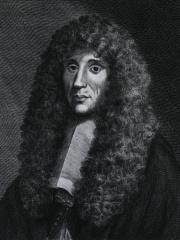
5. Francesco Redi (1626 - 1697)
With an HPI of 68.07, Francesco Redi is the 5th most famous Italian Physician. His biography has been translated into 43 different languages.
Francesco Redi (18 February 1626 – 1 March 1697) was an Italian physician, naturalist, biologist, and poet. He is referred to as the "founder of experimental biology", and as the "father of modern parasitology". He was the first person to challenge the theory of spontaneous generation by demonstrating that maggots come from eggs of flies. Having a doctoral degree in both medicine and philosophy from the University of Pisa at the age of 21, he worked in various cities of Italy. A rationalist of his time, he was a critic of verifiable myths, such as spontaneous generation. His most famous experiments are described in his magnum opus Esperienze intorno alla generazione degl'insetti (Experiments on the Generation of Insects), published in 1668. He disproved that vipers drink wine and could break glasses, and that their venom was poisonous when ingested. He correctly observed that snake venoms were produced from the fangs, not the gallbladder, as was believed. He was also the first to recognize and correctly describe details of about 180 parasites, including Fasciola hepatica and Ascaris lumbricoides. He also distinguished earthworms from helminths (like tapeworms, flukes, and roundworms). He possibly originated the use of the control, the basis of experimental design in modern biology. A collection of his poems first published in 1685 Bacco in Toscana (Bacchus in Tuscany) is considered among the finest works of 17th-century Italian poetry, and for which the Grand Duke Cosimo III gave him a medal of honor.

6. Rita Levi-Montalcini (1909 - 2012)
With an HPI of 67.46, Rita Levi-Montalcini is the 6th most famous Italian Physician. Her biography has been translated into 78 different languages.
Rita Levi-Montalcini (US: LAY-vee MOHN-tahl-CHEE-nee, LEV-ee -, LEE-vee MON-təl-, Italian: [ˈriːta ˈlɛːvi montalˈtʃiːni]; 22 April 1909 – 30 December 2012) was an Italian neurobiologist. She was awarded the 1986 Nobel Prize in Physiology or Medicine jointly with colleague Stanley Cohen for the discovery of nerve growth factor (NGF). From 2001 until her death, she also served in the Italian Senate as a Senator for Life. This honor was given due to her significant scientific contributions. On 22 April 2009, she became the first Nobel laureate to reach the age of 100, and the event was feted with a party at Rome's City Hall.

7. Bernardino of Siena (1380 - 1444)
With an HPI of 63.99, Bernardino of Siena is the 7th most famous Italian Physician. His biography has been translated into 30 different languages.
Bernardino of Siena, OFM (Bernardine; 8 September 1380 – 20 May 1444), was an Italian Catholic priest and Franciscan missionary preacher in Italy. He was a systematizer of scholastic economics. His preaching, his book burnings, and his "bonfires of the vanities" established his reputation in his own lifetime; they were frequently directed against gambling, infanticide, sorcery/witchcraft, sodomy (chiefly among homosexual males), Jews, Romani "Gypsies", usury, and the like. Bernardino was canonised by Pope Nicholas V in 1450 and is referred to as "the Apostle of Italy" for his efforts to revive the country's Catholicism during the 15th century.

8. Peter Damian (1007 - 1072)
With an HPI of 63.23, Peter Damian is the 8th most famous Italian Physician. His biography has been translated into 38 different languages.
Peter Damian, OSB (Latin: Petrus Damianus; Italian: Pietro or Pier Damiani; c. 1007 – 21 or 22 February 1072 or 1073) was an Italian reforming Benedictine monk and cardinal in the circle of Pope Leo IX. Dante placed him in one of the highest circles of Paradiso as a great predecessor of Francis of Assisi and he was declared a Doctor of the Church on 27 September 1828. His feast day is 21 February.

9. Giovanni Alfonso Borelli (1608 - 1679)
With an HPI of 62.28, Giovanni Alfonso Borelli is the 9th most famous Italian Physician. His biography has been translated into 35 different languages.
Giovanni Alfonso Borelli (Italian pronunciation: [dʒoˈvanni alˈfɔnso boˈrɛlli]; 28 January 1608 – 31 December 1679) was a Renaissance Italian physiologist, physicist, and mathematician who is often described as the father of biomechanics. He contributed to the modern principle of scientific investigation by continuing Galileo's practice of testing hypotheses against observation. Trained in mathematics, Borelli also made extensive studies of Jupiter's moons, the mechanics of animal locomotion and, in microscopy, of the constituents of blood. He also used microscopy to investigate the stomatal movement of plants, and undertook studies in medicine and geology. During his career, he enjoyed the patronage of Queen Christina of Sweden. He was the first scientist to explain that animal and human bodily movements are caused by muscular contractions.
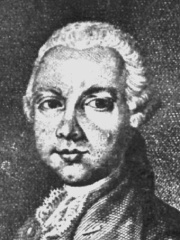
10. Giovanni Antonio Scopoli (1723 - 1788)
With an HPI of 61.64, Giovanni Antonio Scopoli is the 10th most famous Italian Physician. His biography has been translated into 39 different languages.
Giovanni Antonio Scopoli (sometimes Latinized as Johannes Antonius Scopolius) (3 June 1723 – 8 May 1788) was an Italian physician and naturalist. His biographer Otto Guglia named him the "first anational European" and the "Linnaeus of the Austrian Empire".
Pantheon has 36 people classified as physicians born between 400 and 1956. Of these 36, 1 (2.78%) of them are still alive today. The most famous living physicians include Ennio Antonelli. The most famous deceased physicians include Florence Nightingale, Cesare Lombroso, and Camillo Golgi. As of April 2022, 5 new physicians have been added to Pantheon including Saint Fabiola, Antonio Scarpa, and Giulio Bizzozero.
Living Physicians
Go to all RankingsDeceased Physicians
Go to all Rankings
Florence Nightingale
1820 - 1910
HPI: 82.36
Cesare Lombroso
1835 - 1909
HPI: 73.65
Camillo Golgi
1843 - 1926
HPI: 70.06
Marcello Malpighi
1628 - 1694
HPI: 68.56
Francesco Redi
1626 - 1697
HPI: 68.07
Rita Levi-Montalcini
1909 - 2012
HPI: 67.46
Bernardino of Siena
1380 - 1444
HPI: 63.99
Peter Damian
1007 - 1072
HPI: 63.23
Giovanni Alfonso Borelli
1608 - 1679
HPI: 62.28
Giovanni Antonio Scopoli
1723 - 1788
HPI: 61.64
Giovanni Battista Morgagni
1682 - 1771
HPI: 60.19
Pietro Andrea Mattioli
1501 - 1578
HPI: 59.71

Newly Added Physicians (2022)
Go to all Rankings
Saint Fabiola
400 - 399
HPI: 56.09
Antonio Scarpa
1752 - 1832
HPI: 49.10
Giulio Bizzozero
1846 - 1901
HPI: 48.69
Giuseppe Pitrè
1841 - 1916
HPI: 48.07
Mathilde Krim
1926 - 2018
HPI: 37.81

Which Physicians were alive at the same time? This visualization shows the lifespans of the 15 most globally memorable Physicians since 1700.



